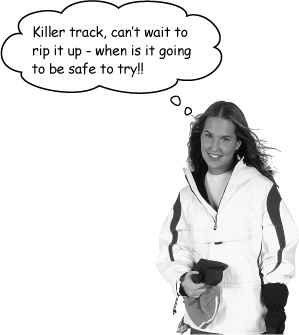Chapter 14. Energy Conservation: Making your life easier

Why do things the hard way when there’s an easier way?
So far, you’ve been solving problems using equations of motion, forces and component vectors. And that’s great - except that it sometimes takes a while to crunch through the math. In this chapter, you’ll learn to spot where you can use energy conservation as a shortcut that lets you solve complicated-looking problems with relative ease.
The ultimate bobsled experience
Killer track, can’t wait to rip it up - when is it going to be safe to try!!
The fairground has designed a unique, new, state-of-the-art bobsled track that’s due to open soon. But before anyone can use it, it has to be designated as safe to ride. That’s your job. Even though you’re not a bobsledder, you can still use physics to figure out whether or not any adjustments have to be made.
From the start to checkpoint 1, the track has a uniform slope. Between checkpoints 1 and 2, the track drops 30.0 m, but the track undulates - the bobsled’s even going uphill for a bit! Then the third part of the track is totally flat - where the bobsled is stopped by applying its brake to the ice.
Your job is to work out what the bobsled’s speed will be at each checkpoint, and how hard you need to brake at the end.

Start any problem with ...
Get Head First Physics now with the O’Reilly learning platform.
O’Reilly members experience books, live events, courses curated by job role, and more from O’Reilly and nearly 200 top publishers.

